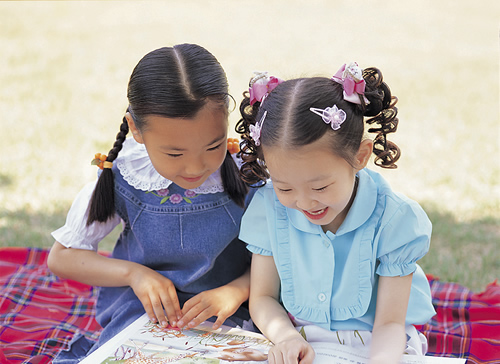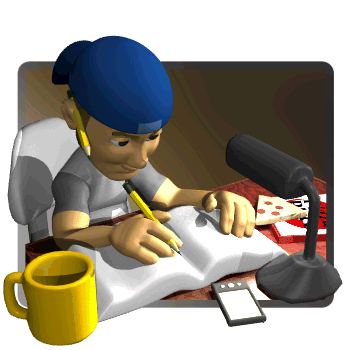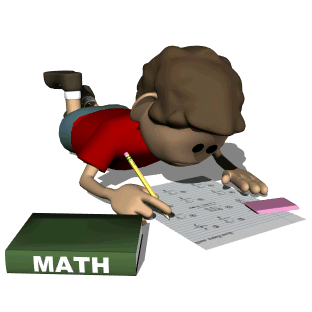Amerigo A. Anastasia School
Together We Can, Juntos Nós Podemos, Juntos Podemos
User Options
Translate
Popular Links
- Amerigo A Anastasia School
- Reading and Math CCCS
Caulfield, Patricia
Page Navigation
-
Welcome To My Online ClassroomName: Ms. CaulfieldSchool: AAAClass / Grade 3, 4, 5 Special EducationELA Standards
 Key Ideas and DetailsRL..1 Ask and answer questions about key details in a text.RL..2. Retell stories, including key details, and demonstrate understanding of their central message.RL..3 Describe characters, settings, and major events in a story using key details.Craft and StructureRL..4 Identify words and phrases in stories or poems that suggest feelings or appeal to the senses..RL..5 Explain major differences between books that tell stories and books that give information, drawing, on a wide reading of a range of a range of text types.RL..6 Identify who is telling the story at various points in a text.Integration of Knowledge and IdeasRL..7 use illustrations and details in a story to describe its characters, settings or events.RL..8 (Not applicable for literature).RL..9 Compare and contrast the adventures and experiences of characters in stories.Range of Reading and Level of Text complexityRL.1.10 With prompting and support, read prose and poetry of appropriate complexity for grade 1.Reading Standards for Informational TextKey Ideas and DetailsRI.1.1 Ask and answer questions about details of the story.RI.1.2 Students will identify the main topic and retell details of a text.RI.1.3 Describe the connection between two individuals, events, ideas, or pieces of information in a text.Craft and StructureRI1.4 Ask and answer questions to help determine or clarify the meaning of words and phrases in a text.RI1.5 Know and use various text features to locate key facts or information in a text. *key facts are glossaries, menus, icons, heading, table of contents, etc.)RI1..6 Distinguish between information provided by pictures or other illustrations and information provided by words in a text.Integration of Knowledge and IdeasRI.1.7 Use the illustrations and details in a text to describe its key ideas.RI1..8 Identify the reasons the author gives to support the main points in a text..RI1..9 identify the basic similarities and the basic similarities between two texts on the same topic. * Illustrations, descriptions, procedures).Reading Standards : Foundational SkillsPrint ConceptsRF.. 1 Demonstrate understanding of hte organization and basic features of print.:a. Recognize the distinguishing features of a sentence (first word, capitalization, ending punctuation).Phonological AwarenessRF. .2 Demonstrate understanding of spoken words, syllables, and sounds (phonemes).a. Recognize and produce rhyming words.b. Orally produce single syllable words by blending sounds (phonemes) including consonant blends.c. Isolate and pronounce initial, medial vowel and final sounds (phonemes) in spoken single syllable words.d.Segment spoken single syllable words into their complete sequence of individual sounds (phoneme).Phonics and Word RecognitionR.F.3 Know and apply grade level phonics and word analysis in decoding words.a. Decode regularly spelled wordsb. Use knowledge that all syllables have a vowel sound.c. Read word with appropriate intonation.FluencyRF.4. Read with sufficient accuracy and fluency to support comprehension.a. Read grade-level text with purpose and understanding.b.Read grade level text orally with accuracy, appropriate rate and expression on successive reading.c.Use context to confirm or self- correct word recognition and understanding rereading as necessary.Writing Standards
Key Ideas and DetailsRL..1 Ask and answer questions about key details in a text.RL..2. Retell stories, including key details, and demonstrate understanding of their central message.RL..3 Describe characters, settings, and major events in a story using key details.Craft and StructureRL..4 Identify words and phrases in stories or poems that suggest feelings or appeal to the senses..RL..5 Explain major differences between books that tell stories and books that give information, drawing, on a wide reading of a range of a range of text types.RL..6 Identify who is telling the story at various points in a text.Integration of Knowledge and IdeasRL..7 use illustrations and details in a story to describe its characters, settings or events.RL..8 (Not applicable for literature).RL..9 Compare and contrast the adventures and experiences of characters in stories.Range of Reading and Level of Text complexityRL.1.10 With prompting and support, read prose and poetry of appropriate complexity for grade 1.Reading Standards for Informational TextKey Ideas and DetailsRI.1.1 Ask and answer questions about details of the story.RI.1.2 Students will identify the main topic and retell details of a text.RI.1.3 Describe the connection between two individuals, events, ideas, or pieces of information in a text.Craft and StructureRI1.4 Ask and answer questions to help determine or clarify the meaning of words and phrases in a text.RI1.5 Know and use various text features to locate key facts or information in a text. *key facts are glossaries, menus, icons, heading, table of contents, etc.)RI1..6 Distinguish between information provided by pictures or other illustrations and information provided by words in a text.Integration of Knowledge and IdeasRI.1.7 Use the illustrations and details in a text to describe its key ideas.RI1..8 Identify the reasons the author gives to support the main points in a text..RI1..9 identify the basic similarities and the basic similarities between two texts on the same topic. * Illustrations, descriptions, procedures).Reading Standards : Foundational SkillsPrint ConceptsRF.. 1 Demonstrate understanding of hte organization and basic features of print.:a. Recognize the distinguishing features of a sentence (first word, capitalization, ending punctuation).Phonological AwarenessRF. .2 Demonstrate understanding of spoken words, syllables, and sounds (phonemes).a. Recognize and produce rhyming words.b. Orally produce single syllable words by blending sounds (phonemes) including consonant blends.c. Isolate and pronounce initial, medial vowel and final sounds (phonemes) in spoken single syllable words.d.Segment spoken single syllable words into their complete sequence of individual sounds (phoneme).Phonics and Word RecognitionR.F.3 Know and apply grade level phonics and word analysis in decoding words.a. Decode regularly spelled wordsb. Use knowledge that all syllables have a vowel sound.c. Read word with appropriate intonation.FluencyRF.4. Read with sufficient accuracy and fluency to support comprehension.a. Read grade-level text with purpose and understanding.b.Read grade level text orally with accuracy, appropriate rate and expression on successive reading.c.Use context to confirm or self- correct word recognition and understanding rereading as necessary.Writing Standards Text Types and PurposesW.1 Write opinion piecesW.2 Write informative/ explanatory texts. Supply a topic, facts and provide some sense of closure.W.3 Write narratives in which they recount two or more appropriately sequenced events.Production and Distribution of WritingW.4 Begins in grade 3.W.5 With guidance and support from adults focus on a topic, respond to questions and suggestions from peers, and add details to strengthen writing as needed.W.6 With guidance and support from adults use a variety of digital tools to produce and publish writing.Research to Build and Present KnowledgeW.7 Participate in shared research and writing projects (how to books).W.8. With guidance and support, recall information from experiences or gather information from provided sources to answer a question.Speaking and Listening Standards
Text Types and PurposesW.1 Write opinion piecesW.2 Write informative/ explanatory texts. Supply a topic, facts and provide some sense of closure.W.3 Write narratives in which they recount two or more appropriately sequenced events.Production and Distribution of WritingW.4 Begins in grade 3.W.5 With guidance and support from adults focus on a topic, respond to questions and suggestions from peers, and add details to strengthen writing as needed.W.6 With guidance and support from adults use a variety of digital tools to produce and publish writing.Research to Build and Present KnowledgeW.7 Participate in shared research and writing projects (how to books).W.8. With guidance and support, recall information from experiences or gather information from provided sources to answer a question.Speaking and Listening Standards Comprehension and CollaborationSL..1 Participate in collaborative conversations with diverse partners .a. Follow rules for talking.b.Build on other's talk in conversation by responding to the comments of others through multiple exchanges.c. Ask questions to clear up any confusion about the topics and texts under discussion.Presentation and knowledge of IdeasSL.4 Describe people, places and things and events with relevant details, expressing ideas and feelings clearly.SL.5 Add drawings or other visual displays to descriptions when appropriate to clarify ideas, thoughts, and feelings.SL..6 Produce complete sentences when appropriate to task and situation.Language StandardsConventions of Standard EnglishL.1 Demonstrate command of the conventions of standard English grammar and usage when writing and speaking.a. Print many upper and lower case letters.b. Use common, proper and possessive nouns.c. Use singular and plural nouns with matching verbs in basic sentences (he runs, we run).d. Use personal, possessive, and indefinite pronouns (I, me, they, their, anyone, etc.).e. Use verbs to convey a sense of the past, present and the future.f. Use frequently occurring adjectives.g. Use frequently occurring conjunctions (and, but, or, so, because).h. Use determiners.i. Use frequently occurring prepositions (during, beyond, toward).j. produce and expand complete, simple and compound declarative, interrogative, imperative, and exclamatory sentences in response to prompts.L.2 Demonstrate command of the conventions of standard English capitalization, punctuation, and spelling when writing.a. Capitalize dates and names of people.b. Use end punctuation to sentences.c. Use commas in dates and to separate single words in a series.d. Use conventional spelling of words with common spelling patterns and for frequently occurring irregular words.e. Spell untaught words phonetically, drawing on phonemic awareness and spelling conventions.Knowledge of LanguageL.3 Begins in grade 3L.4 Determine or clarify the meaning of unknown and multiple meaning words and phrases based on grade 1 reading and content, choosing flexibly from an array of strategies.a. Use sentence context as a clue to the meaning of word or phrase.b. Use commonly occurring affixes as a clue to the meaning of a word.c. Identify frequently occurring root words and their inflectional words (look; looking, looked).L.5 With guidance and support demonstrate understanding of word relationships and nuances in word meanings.a. Sort words into categories (colors, clothing) to gain a sense of the concepts the categories represent.b.Define words by category and by one or more key attributes ( a duck is a bird that swims, a tiger is a big cat with striped, etc.).c. Identify real life connections between words and their use (places at home that are cozy).d. Distinguishing shades of meaning among verbs differing in manner (look; peek, glance, stare, glare, scowl, etc.). and adjectives differing in intensity (large, gigantic, enormous) by defining or choosing them or by acting out the meanings.L.6 Use words and phrases acquired through conversations, reading, and being read to, and responding to texts, including using frequently occurring conjunctions to signal simple relationships (because).Math Core Standards
Comprehension and CollaborationSL..1 Participate in collaborative conversations with diverse partners .a. Follow rules for talking.b.Build on other's talk in conversation by responding to the comments of others through multiple exchanges.c. Ask questions to clear up any confusion about the topics and texts under discussion.Presentation and knowledge of IdeasSL.4 Describe people, places and things and events with relevant details, expressing ideas and feelings clearly.SL.5 Add drawings or other visual displays to descriptions when appropriate to clarify ideas, thoughts, and feelings.SL..6 Produce complete sentences when appropriate to task and situation.Language StandardsConventions of Standard EnglishL.1 Demonstrate command of the conventions of standard English grammar and usage when writing and speaking.a. Print many upper and lower case letters.b. Use common, proper and possessive nouns.c. Use singular and plural nouns with matching verbs in basic sentences (he runs, we run).d. Use personal, possessive, and indefinite pronouns (I, me, they, their, anyone, etc.).e. Use verbs to convey a sense of the past, present and the future.f. Use frequently occurring adjectives.g. Use frequently occurring conjunctions (and, but, or, so, because).h. Use determiners.i. Use frequently occurring prepositions (during, beyond, toward).j. produce and expand complete, simple and compound declarative, interrogative, imperative, and exclamatory sentences in response to prompts.L.2 Demonstrate command of the conventions of standard English capitalization, punctuation, and spelling when writing.a. Capitalize dates and names of people.b. Use end punctuation to sentences.c. Use commas in dates and to separate single words in a series.d. Use conventional spelling of words with common spelling patterns and for frequently occurring irregular words.e. Spell untaught words phonetically, drawing on phonemic awareness and spelling conventions.Knowledge of LanguageL.3 Begins in grade 3L.4 Determine or clarify the meaning of unknown and multiple meaning words and phrases based on grade 1 reading and content, choosing flexibly from an array of strategies.a. Use sentence context as a clue to the meaning of word or phrase.b. Use commonly occurring affixes as a clue to the meaning of a word.c. Identify frequently occurring root words and their inflectional words (look; looking, looked).L.5 With guidance and support demonstrate understanding of word relationships and nuances in word meanings.a. Sort words into categories (colors, clothing) to gain a sense of the concepts the categories represent.b.Define words by category and by one or more key attributes ( a duck is a bird that swims, a tiger is a big cat with striped, etc.).c. Identify real life connections between words and their use (places at home that are cozy).d. Distinguishing shades of meaning among verbs differing in manner (look; peek, glance, stare, glare, scowl, etc.). and adjectives differing in intensity (large, gigantic, enormous) by defining or choosing them or by acting out the meanings.L.6 Use words and phrases acquired through conversations, reading, and being read to, and responding to texts, including using frequently occurring conjunctions to signal simple relationships (because).Math Core Standards Operations and Algebraic Thinking 1.OARepresent and solve problems involving addition and subtraction1. Use addition and subtraction within 20 to solve word problems involving situations of adding to, taking from, putting together, taking apart, and comparing, with unknowns in all positions; by using objects, drawings, and equations with a symbol for the unknown number to represent the problem.2. Solve word problems that call for addition of three whole numbers whose sum is less than or equal to 20 by using objects, drawings, and equations with a symbol for he unknown number to represent the problem.Understand and apply properties of operations and the relationship between addition and subtraction.3. Apply properties of operations as strategies to add and subtract.4. Understand subtraction as an unknown-addend problem. Ex: subtract 10-8 by finding the number that makes 10 when added to 8.Add and Subtract Within 205. Relate counting to addition and subtraction.6. And and subtract within 20, demonstrating fluency for addition and subtraction within 10. Use strategies such as counting on, making ten, decomposing a number, using a relationship between adding and subtracting and creating an equivalent but easier or known sums.Work with Addition and Subtraction Equations7.Understand the meaning of the equal sign and determine if equations involving addition and subtraction are true or flase8.Determine the unknown whole number in an addition or subtraction equation relating three whole numbers.Number and Operations in Base Ten 1.NBTExtend the Counting Sequence1.Count to 120, starting at any number less than 120. In this range, read and write numerals and represent a number of objects with a written numeral.Understand Place Value2. Understand that the two digits of a two digit number represent amounts of tens and ones. Understand the following as special cases:a.10 can be thought of as a bundle; called a "ten".b. The numbers 11 to 19 are composed of a ten and a one, ten and a two... ones.c. The numbers 10, 20, 30, ...90 refer to one, two three...nine tens.3. Compare two two-digit numbers based on meanings of the tens and ones digits, recording the results of comparisons with the symbols > = and <.Use Place Value Understanding and Properties of Operations to Add and Subtract4. Add within 100, including adding a two digit number and a one digit number and adding a two digit number and a multiple of ten, using concrete models of drawings and strategies based on place value, properties of operations, and/or the relationship between addition and subtraction. Understand that in adding two digit numbers, one adds tens and tens, ones and ones, and sometimes it is necessary to compose a ten.5. Given a two digit number,mentally find ten more or 10 less than the number without having to count; explain the reasoning used.6. Subtract multiples of ten in the range 10-90 from multiples of 10 in the range 10-90 (positive or zero differences) using concrete models or drawings and strategies based on place value, properties of operations and/or the relationship between addition and subtraction.Measurement and Data 1.MDMeasure Lengths Indirectly and by Iterating Length Units1. Order three objects by length; compare the lengths of two objects indirectly by using a third object.2. Express the length of an object as a whole number of length units by laying multiple copies of a shorter object end to end; understand that the length measurement of an object is the number of same size llength units that span it with no gaps or overlaps.Tell and Write Time3. Tell and write time in hours and half-hours using analog and digital clocks.Represent and Interpret Data4. Organize, represent, and interpret data with up to three categories; ask and answer questions about the total number of data points, how many in each category, and how many more or less are in one category than in another.Geometry 1.GReason with Shapes and their Attributes1. Distinguish between defining attributes versus non-defining attributes; build and draw shapes to possess defining attributes.2. Compose two dimensional shapes or three dimensional shapes to create composite shapes and compose new shapes from the composite shape.3. Partition circles and rectangles into two and four equal shapes, describe the shares using the words halves, fourths, etc.
Operations and Algebraic Thinking 1.OARepresent and solve problems involving addition and subtraction1. Use addition and subtraction within 20 to solve word problems involving situations of adding to, taking from, putting together, taking apart, and comparing, with unknowns in all positions; by using objects, drawings, and equations with a symbol for the unknown number to represent the problem.2. Solve word problems that call for addition of three whole numbers whose sum is less than or equal to 20 by using objects, drawings, and equations with a symbol for he unknown number to represent the problem.Understand and apply properties of operations and the relationship between addition and subtraction.3. Apply properties of operations as strategies to add and subtract.4. Understand subtraction as an unknown-addend problem. Ex: subtract 10-8 by finding the number that makes 10 when added to 8.Add and Subtract Within 205. Relate counting to addition and subtraction.6. And and subtract within 20, demonstrating fluency for addition and subtraction within 10. Use strategies such as counting on, making ten, decomposing a number, using a relationship between adding and subtracting and creating an equivalent but easier or known sums.Work with Addition and Subtraction Equations7.Understand the meaning of the equal sign and determine if equations involving addition and subtraction are true or flase8.Determine the unknown whole number in an addition or subtraction equation relating three whole numbers.Number and Operations in Base Ten 1.NBTExtend the Counting Sequence1.Count to 120, starting at any number less than 120. In this range, read and write numerals and represent a number of objects with a written numeral.Understand Place Value2. Understand that the two digits of a two digit number represent amounts of tens and ones. Understand the following as special cases:a.10 can be thought of as a bundle; called a "ten".b. The numbers 11 to 19 are composed of a ten and a one, ten and a two... ones.c. The numbers 10, 20, 30, ...90 refer to one, two three...nine tens.3. Compare two two-digit numbers based on meanings of the tens and ones digits, recording the results of comparisons with the symbols > = and <.Use Place Value Understanding and Properties of Operations to Add and Subtract4. Add within 100, including adding a two digit number and a one digit number and adding a two digit number and a multiple of ten, using concrete models of drawings and strategies based on place value, properties of operations, and/or the relationship between addition and subtraction. Understand that in adding two digit numbers, one adds tens and tens, ones and ones, and sometimes it is necessary to compose a ten.5. Given a two digit number,mentally find ten more or 10 less than the number without having to count; explain the reasoning used.6. Subtract multiples of ten in the range 10-90 from multiples of 10 in the range 10-90 (positive or zero differences) using concrete models or drawings and strategies based on place value, properties of operations and/or the relationship between addition and subtraction.Measurement and Data 1.MDMeasure Lengths Indirectly and by Iterating Length Units1. Order three objects by length; compare the lengths of two objects indirectly by using a third object.2. Express the length of an object as a whole number of length units by laying multiple copies of a shorter object end to end; understand that the length measurement of an object is the number of same size llength units that span it with no gaps or overlaps.Tell and Write Time3. Tell and write time in hours and half-hours using analog and digital clocks.Represent and Interpret Data4. Organize, represent, and interpret data with up to three categories; ask and answer questions about the total number of data points, how many in each category, and how many more or less are in one category than in another.Geometry 1.GReason with Shapes and their Attributes1. Distinguish between defining attributes versus non-defining attributes; build and draw shapes to possess defining attributes.2. Compose two dimensional shapes or three dimensional shapes to create composite shapes and compose new shapes from the composite shape.3. Partition circles and rectangles into two and four equal shapes, describe the shares using the words halves, fourths, etc.


